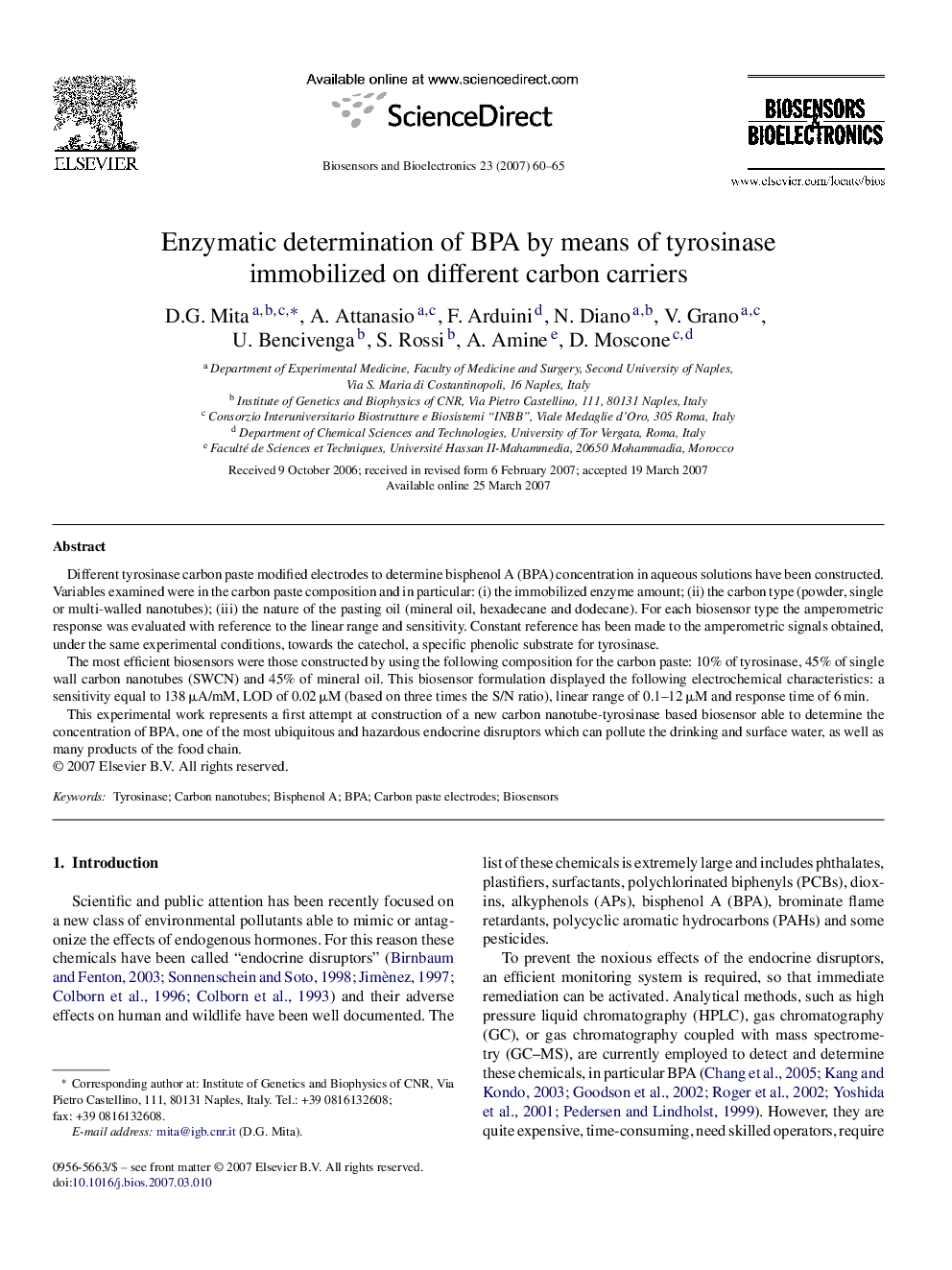| Article ID | Journal | Published Year | Pages | File Type |
|---|---|---|---|---|
| 870172 | Biosensors and Bioelectronics | 2007 | 6 Pages |
Different tyrosinase carbon paste modified electrodes to determine bisphenol A (BPA) concentration in aqueous solutions have been constructed. Variables examined were in the carbon paste composition and in particular: (i) the immobilized enzyme amount; (ii) the carbon type (powder, single or multi-walled nanotubes); (iii) the nature of the pasting oil (mineral oil, hexadecane and dodecane). For each biosensor type the amperometric response was evaluated with reference to the linear range and sensitivity. Constant reference has been made to the amperometric signals obtained, under the same experimental conditions, towards the catechol, a specific phenolic substrate for tyrosinase.The most efficient biosensors were those constructed by using the following composition for the carbon paste: 10% of tyrosinase, 45% of single wall carbon nanotubes (SWCN) and 45% of mineral oil. This biosensor formulation displayed the following electrochemical characteristics: a sensitivity equal to 138 μA/mM, LOD of 0.02 μM (based on three times the S/N ratio), linear range of 0.1–12 μM and response time of 6 min.This experimental work represents a first attempt at construction of a new carbon nanotube-tyrosinase based biosensor able to determine the concentration of BPA, one of the most ubiquitous and hazardous endocrine disruptors which can pollute the drinking and surface water, as well as many products of the food chain.
